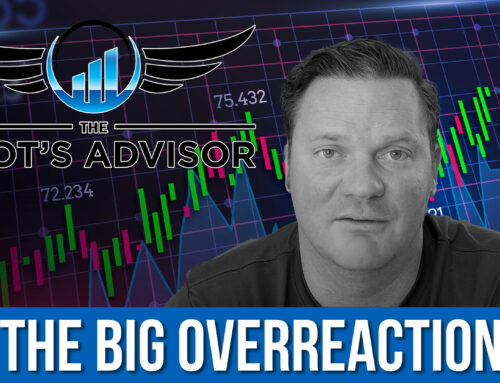INVESTORS KEEP COOL DESPITE RECENT EVENTS
The major averages ended last week on a high note despite ongoing concerns about terrorism. Investors kept their cool and gave the S&P 500 its best week of the year.[1] For the week, the S&P 500 gained 3.27%, the Dow rose 3.35%, and the NASDAQ grew 3.59%.[2]
Terrorism reared its ugly head again with an attack in Mali last week that left 20 dead.[3] Brussels, the seat of EU governance, went into lockdown on Saturday after authorities found evidence of a planned Paris-style attack on the city.[4] So far, investors seem to be shrugging off the concerns about terrorism. While cool-headed behavior is good news for investors tired of volatility, it’s a grim sign of the times: People are getting used to tragedies.
In other news, anticipation around the next Federal Reserve Open Market Committee meeting in December is heating up and Fed spokespeople are out in force. St. Louis Fed President James Bullard stated that a rate hike is coming “soon.”[5] Dennis Lockhart, President of the Atlanta Fed, cited improving labor markets as evidence supporting a rate raise.[6]
On top of the speechmaking, FOMC minutes released on Wednesday showed that the Fed is fully prepared to raise rates in December.[7] The takeaway: Rate hikes may be imminent. However, we also know that the Fed is very responsive to data. Before making a decision in December, Fed officials will be taking a hard look at the November jobs report as well as taking a look at the global economic situation.
During this holiday-shortened week, investors will be paying close attention to a revised third-quarter economic growth report. The first report showed that the economy grew at a tepid 1.5% in the third quarter. Unofficial estimates are projecting a slight rise in the revised estimate to 1.6% for Q3 and a spike to 2.7% in the fourth quarter.[8] Will these projections hold? Let’s hope so. Analysts will also be closely watching early reports from retailers for clues about what the crucial holiday shopping season has in store.
ECONOMIC CALENDAR:
Monday: PMI Manufacturing Index Flash, Existing Home Sales
Tuesday: GDP, International Trade in Goods, S&P Case-Shiller HPI, Consumer Confidence
Wednesday: Durable Goods Orders, Jobless Claims, Personal Income and Outlays New Home Sales, Consumer Sentiment, EIA Petroleum Status Report
Thursday: U.S. Markets Closed for Thanksgiving Day Holiday

Notes: All index returns exclude reinvested dividends, and the 5-year and 10-year returns are annualized. Sources: Yahoo! Finance and Treasury.gov. International performance is represented by the MSCI EAFE Index. Corporate bond performance is represented by the DJCBP. Past performance is no guarantee of future results. Indices are unmanaged and cannot be invested into directly.
Weekly jobless claims hold steady. New claims for unemployment benefits remained at 276,000, the 36th straight week below the key 300,000 level. The sustained strength in the labor market could encourage the Fed to raise rates at next month’s meeting.[9]
Housing starts drop to seven-month low.Groundbreaking on new homes dropped in October to multi-month lows. However, a sharp rise in building permits suggests that the housing market still has momentum.[10]
Wages may be growing faster than we think. A measure of wage growth published by the Atlanta Fed shows that wages grew 3.0% in September, a number much higher than the 2.2% shown by official Labor Department statistics.[11]
Q3 earnings fall 1.5% from one year ago. With most earning reports in from the third quarter, analysts project that earnings fell last quarter (year-over-year) for the first time since 2009. However, excluding the ailing Energy sector, earnings per share would be up 3.9%.[12]
These are the views of Platinum Advisor Marketing Strategies, LLC, and not necessarily those of the named representative, Broker dealer or Investment Advisor, and should not be construed as investment advice. Neither the named representative nor the named Broker dealer or Investment Advisor gives tax or legal advice. All information is believed to be from reliable sources; however, we make no representation as to its completeness or accuracy. Please consult your financial advisor for further information.
Investing involves risk including the potential loss of principal. No investment strategy can guarantee a profit or protect against loss in periods of declining values.
Diversification does not guarantee profit nor is it guaranteed to protect assets.
The Standard & Poor’s 500 (S&P 500) is an unmanaged group of securities considered to be representative of the stock market in general.
The Dow Jones Industrial Average is a price-weighted average of 30 significant stocks traded on the New York Stock Exchange and the NASDAQ. The DJIA was invented by Charles Dow back in 1896.
The Nasdaq Composite is an index of the common stocks and similar securities listed on the NASDAQ stock market and is considered a broad indicator of the performance of stocks of technology companies and growth companies.
The MSCI EAFE Index was created by Morgan Stanley Capital International (MSCI) that serves as a benchmark of the performance in major international equity markets as represented by 21 major MSCI indexes from Europe, Australia and Southeast Asia.
The Dow Jones Corporate Bond Index is a 96-bond index designed to represent the market performance, on a total-return basis, of investment-grade bonds issued by leading U.S. companies. Bonds are equally weighted by maturity cell, industry sector, and the overall index.
The S&P/Case-Shiller Home Price Indices are the leading measures of U.S. residential real estate prices, tracking changes in the value of residential real estate. The index is made up of measures of real estate prices in 20 cities and weighted to produce the index.
The 10-year Treasury Note represents debt owed by the United States Treasury to the public. Since the U.S. Government is seen as a risk-free borrower, investors use the 10-year Treasury Note as a benchmark for the long-term bond market.
Google Finance is the source for any reference to the performance of an index between two specific periods.
Opinions expressed are subject to change without notice and are not intended as investment advice or to predict future performance.
Past performance does not guarantee future results.
You cannot invest directly in an index.
Consult your financial professional before making any investment decision.
Fixed income investments are subject to various risks including changes in interest rates, credit quality, inflation risk, market valuations, prepayments, corporate events, tax ramifications and other factors.
By clicking on these links, you will leave our server, as they are located on another server. We have not independently verified the information available through this link. The link is provided to you as a matter of interest. Please click on the links below to leave and proceed to the selected site.
- http://www.cnbc.com/2015/11/20
- http://finance.yahoo.com/q
http://finance.yahoo.com
http://finance.yahoo.com - http://www.cnn.com/2015/11/21
- http://www.theguardian.com/world/2015
- http://www.foxbusiness.com/economy-policy
- http://www.cnbc.com/2015/11/19
- http://www.foxbusiness.com/markets
- http://projects.wsj.com
- http://www.cnbc.com/2015/11/12
- http://www.foxbusiness.com/economy-policy
- http://www.cnbc.com/2015/11/20
- http://www.cnbc.com/2015/11/20/








